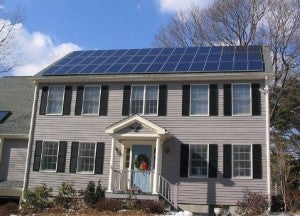 “When the connection was finally made the Union Pacific and the Central Pacific engineers ran their engines up until their pilots touched. Then the engineers shook hands and had their pictures taken and each broke a bottle of champagne on the pilot of the other’s engine and had their picture taken again.”
“When the connection was finally made the Union Pacific and the Central Pacific engineers ran their engines up until their pilots touched. Then the engineers shook hands and had their pictures taken and each broke a bottle of champagne on the pilot of the other’s engine and had their picture taken again.”
– Alexander Topence on the scene in Promontory, Utah in 1869 after Western governors drove the “last spike” of the Transcontinental Railroad.
These are good times for clean energy in California. A decade of visionary policymaking, a motivated private sector, and copious sunshine have joined together to reduce the cost of solar in the Golden State by 90 percent.
We already produce more solar energy than any other state. And thanks to a new law Governor Jerry Brown signed last month, SB 350 (De León), California has committed itself to yet another ambitious clean energy goal: 50 percent of electricity in the nation’s most populous state will come from renewables by 2030. Solar is a central part, among others, of California’s strategy to meet this new target.
Amid all this optimism, fast solar growth poses challenges as well. A lot of it has to do with timing. Read More



